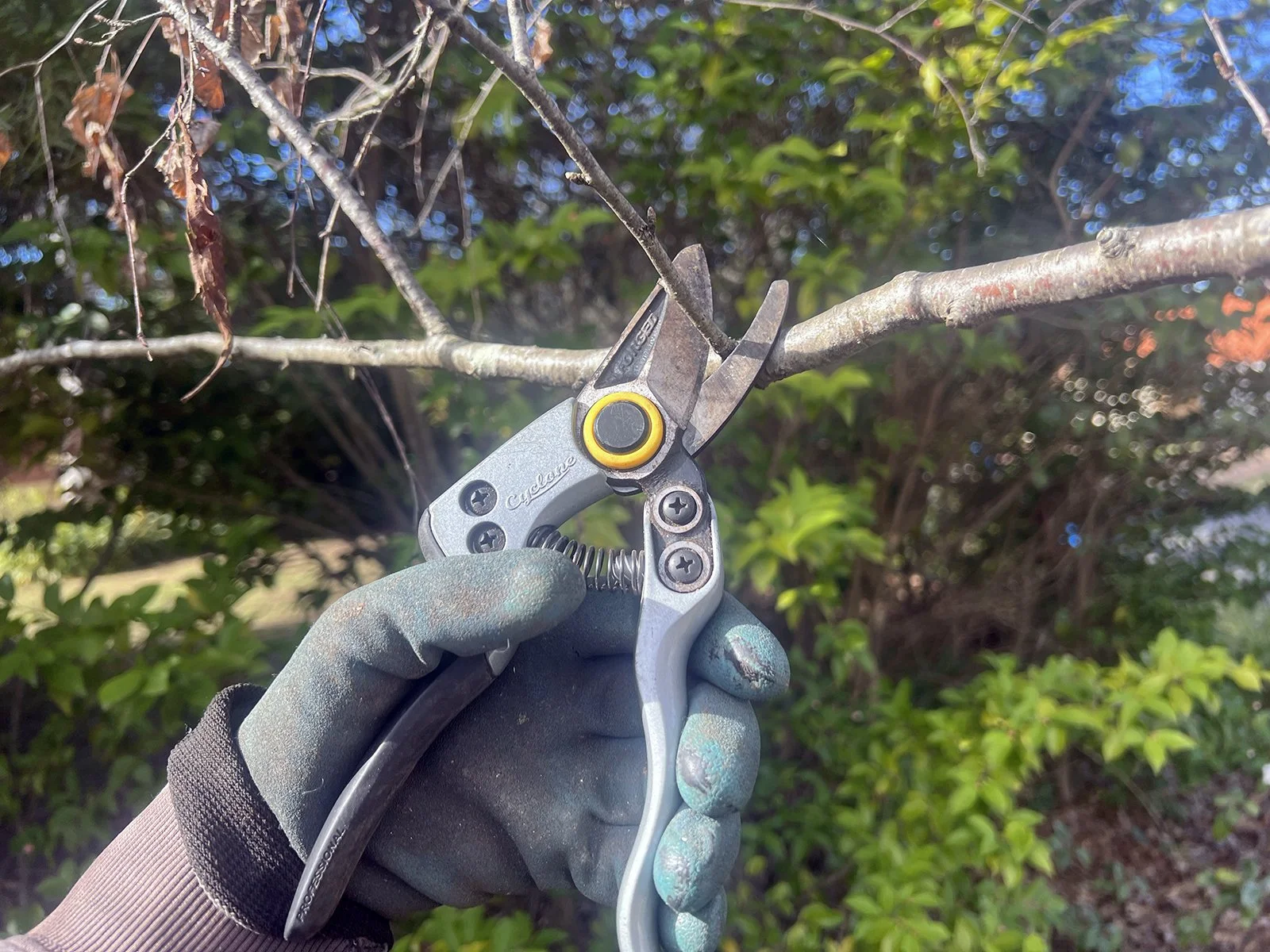Winter tree pruning guide for Australian landscapers: Tools, timing and best practices
Improve tree structure, safety and performance across your sites.
Winter is the perfect time to assess and manage the structure of trees in streetscapes, parks, civic spaces and commercial developments.
With leaves gone and trees in dormancy, it’s easier to see the tree’s shape, and there’s less stress on the plant, making winter the safest and most effective time to prune.
In commercial settings, pruning in winter helps improve tree health, shape, safety and long-term value. Whether you’re managing rows of ornamental pears or crepe myrtles in a public space, winter pruning sets your trees up for a strong growing season.
This guide is designed for professionals working in conditions where cool winters and set planting seasons make it ideal for tree work. It focuses on exotic and deciduous species commonly used in structured commercial plantings, such as those grown by Arboretum Farm.
Why prune in winter?
Winter pruning offers practical benefits for both short-term management and long-term landscape success.
Structural clarity: Without foliage, it’s easier to assess branch structure and identify weak, crossing or poorly spaced limbs. This is critical for formative pruning, especially in young street or avenue trees.
Reduced disease: Many fungal and bacterial pathogens are less active in cooler months. Pruning while trees are dormant minimises infection risk and supports cleaner wound healing.
Improved growth and form: Pruning encourages healthy bud development and balanced canopy growth when spring arrives.
Safety and risk management: Removing damaged or unstable limbs before storms or strong winds hit reduces hazards and liability, particularly in high-traffic or public areas.
Winter pruning is about proactively managing tree performance and site safety in the quieter months, so trees are well-prepared for the demands of spring and summer.
What species benefit from winter pruning?
Not all trees require or respond well to winter pruning — but many of the deciduous species commonly planted in commercial settings do. The following species appreciate a careful winter pruning:
Pyrus calleryana cultivars (e.g. Cleveland Select, Winter Glow): Ideal for avenues and civic plantings. Light thinning can improve form, airflow and resistance to wind damage. Maintain a strong central leader and remove low lateral branches where necessary.
Betula pendula (Silver Birch): These fast-growing trees can develop congested canopies. Use winter pruning to remove crossing limbs and promote graceful, upright form.
Lagerstroemia indica x fauriei ‘Natchez’ (Crepe Myrtle): Remove spent flower heads, tidy lower branching and refine structure. Avoid aggressive “lopping” and instead focus on subtle shaping and canopy balance.
Pyrus nivalis (Snow Pear): Often used in formal or linear plantings. Prune to maintain symmetry and visibility, especially for trees planted near paths, driveways or other accessways.
Fruit trees (apple and pear varieties): In community gardens or urban orchards, winter pruning supports better yields and structural integrity. For stone fruits like apricots and cherries, prune after fruiting; peaches and nectarines are best pruned in winter while dormant.
When and how to prune
In Victoria, the ideal pruning period typically runs from mid to late June through to late August. Trees should be fully dormant before pruning begins, and major work should wrap up before new buds begin to swell.
Best practice techniques:
Use sharp, sterilised tools and clean between each tree to avoid disease spread.
Make clean cuts just outside the branch collar to support natural healing.
Prioritise removal of:
Dead, diseased or damaged wood
Rubbing or inward-facing branches
Water shoots or epicormic growth
Limbs obstructing access or sightlines
Maintain the tree’s natural form — avoid shaping trees into unnatural silhouettes.
Avoid topping: Topping trees (removing the entire upper crown) can cause long-term damage and encourage weak, fast regrowth. If crown size must be reduced, do so strategically and in consultation with a specialist.
For younger or newly established trees, formative pruning is essential to ensure long-term stability and performance. If you’re unfamiliar with best practice for formative shaping, consider reviewing AS4373: Pruning of Amenity Trees, the Australian Standard for tree pruning. It provides detailed guidance for maintaining structural integrity and long-term tree health.
Special considerations for commercial projects
Managing trees in public or high-traffic environments comes with added layers of responsibility. Here are a few operational considerations:
Plan around planting schedules: Coordinate pruning with project timelines to avoid overlap with planting, hardscaping or other site works.
Implement safety protocols: Use cones, signage, PPE and traffic control where required. Ensure that pruning crews are properly trained and covered by insurance.
Keep good records: Maintain logs of all pruning works – including species, dates and outcomes – to support compliance and future planning.
Know your limits: Engage an arborist for advanced work on mature trees or in sensitive locations. Their input can prevent costly mistakes and improve long-term outcomes.
Planning your next season?
Winter is not just about maintenance. It’s a great time to assess planting gaps, plan for spring and get your project schedule sorted.
Need trees you can count on for your next council, streetscape or development project?
Download our current stocklist or get in touch to learn more about advanced stock availability, contract growing or landscape support.


